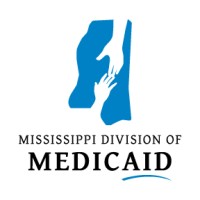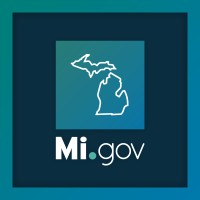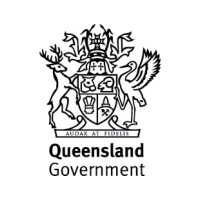
Mississippi Division of Medicaid Company Cyber Security Posture
ms.govMedicaid provides health coverage for eligible, low income populations in Mississippi. These populations include children, low-income families, pregnant women, the aged and disabled. Eligible members do not directly receive money from Medicaid for health benefits. Enrolled and qualified Medicaid providers are reimbursed for health services. Medicaid was enacted by the Mississippi Legislature in 1969. The Mississippi Division of Medicaid, in the Office of the Governor, is designated by state statute as the single state agency responsible for administering Medicaid in Mississippi. The Mississippi Division of Medicaid has more than 900 employees located throughout one central office, 30 regional offices and over 80 outstations. Each state runs its own Medicaid program within federal guidelines, jointly funded by state and federal dollars. For Medicaid, the Federal Medical Assistance Percentage (FMAP) is used to calculate the amount of federal matching funds for state medical services expenditures. The Social Security Act requires the Secretary of Health and Human Services to calculate and publish the FMAP annually. The Mississippi Division of Medicaid responsibly provides access to quality health coverage for vulnerable Mississippians. We are committed to accomplishing our mission by conducting operations with: Accountability Consistency Respect
MDM Company Details
mississippi-division-of-medicaid
236 employees
1191
922
Government Administration
ms.gov
Scan still pending
MIS_3074018
In-progress
Between 900 and 1000
This score is AI-generated and less favored by cyber insurers, who prefer the TPRM score.
 MDM Global Score
MDM Global Score.png)

Mississippi Division of Medicaid Company Scoring based on AI Models
| Model Name | Date | Description | Current Score Difference | Score |
|---|---|---|---|---|
| AVERAGE-Industry | 03-12-2025 | This score represents the average cybersecurity rating of companies already scanned within the same industry. It provides a benchmark to compare an individual company's security posture against its industry peers. | N/A | Between 900 and 1000 |
Mississippi Division of Medicaid Company Cyber Security News & History
| Entity | Type | Severity | Impact | Seen | Url ID | Details | View |
|---|---|---|---|---|---|---|---|
| Mississippi Division of Medicaid | Data Leak | 85 | 3 | 06/2017 | MIS91911122 | Link | |
Rankiteo Explanation : Attack with significant impact with internal employee data leaksDescription: The Mississippi Division of Medicaid (DOM) informed that approximately 5,220 individuals of the potential exposure of their protected health information (PHI) were not securely transmitted for more than three years. The exposed information includes names, birth dates, addresses, phone numbers, email addresses, admission and enrollment dates, health insurer, condition, Social Security numbers, and Medicare and/or Medicaid identification numbers. They immediately removed error from the website and use of the online form service was terminated. The agency processed of strengthening technological safeguards, in addition to revising policies and procedures addressing privacy and security regulations. | |||||||
Mississippi Division of Medicaid Company Subsidiaries

Medicaid provides health coverage for eligible, low income populations in Mississippi. These populations include children, low-income families, pregnant women, the aged and disabled. Eligible members do not directly receive money from Medicaid for health benefits. Enrolled and qualified Medicaid providers are reimbursed for health services. Medicaid was enacted by the Mississippi Legislature in 1969. The Mississippi Division of Medicaid, in the Office of the Governor, is designated by state statute as the single state agency responsible for administering Medicaid in Mississippi. The Mississippi Division of Medicaid has more than 900 employees located throughout one central office, 30 regional offices and over 80 outstations. Each state runs its own Medicaid program within federal guidelines, jointly funded by state and federal dollars. For Medicaid, the Federal Medical Assistance Percentage (FMAP) is used to calculate the amount of federal matching funds for state medical services expenditures. The Social Security Act requires the Secretary of Health and Human Services to calculate and publish the FMAP annually. The Mississippi Division of Medicaid responsibly provides access to quality health coverage for vulnerable Mississippians. We are committed to accomplishing our mission by conducting operations with: Accountability Consistency Respect
Access Data Using Our API

Get company history
.png)
MDM Cyber Security News
Which Federal Programs Are Under Scrutiny? The Budget Office Named 2,600 of Them.
We identified programs in the OMB instructions by their assistance listing number, then used program titles and obligation totals for the most recent complete ...
HIPAA Regulatory Updates
HIPAA Regulatory Updates · HHS Confirms When HIPAA Fines Can be Issued to Business Associates · HHS Changes HITECH Act Penalties for HIPAA Violations · HHS ...

MDM Similar Companies

MP Forest Department
Madhya Pradesh Forest Department is engaged in management of largest forest area in the country. Economy of about 95 lakh tribal is inextricably linked with forests. Nine National Parks and Twenty Five Wildlife Sanctuaries are attractive destinations on tourists. Forestry operations provide 300 lakh

State of Michigan
Every day the contributions and achievements of State of Michigan employees have a direct impact on over 10 million Michiganders across the state. If you're looking for a fulfilling career in state government that can make a real difference in the lives of others, you can find your place working wit

Selangor State Government
Selangor also known by its Arabic honorific, Darul Ehsan, or "Abode of Sincerity" is one of the 13 states of Malaysia. It surrounds the federal territories of Kuala Lumpur and Putrajaya, both of which were once under Selangor's territorial sovereignty. The state of Selangor has the largest econom

Agencia de Recaudación y Control Aduanero
La Administración Federal de Ingresos Públicos es el ente encargado de ejecutar las políticas impulsadas por el Poder Ejecutivo Nacional en materia tributaria, aduanera y de recaudación de los recursos de la seguridad social. Este organismo creado en el año 1997 (Decreto 618/1997) está inte

Cebu City Government
Cebu City is located on the central eastern part of Cebu Province, an island at the center of the Visayas in Southern Philippines. As defined by the Bureau of Land Location Monument (BLLM) No. 1, Cebu Cadastral Survey, it is 10 degrees 17 minutes North Latitude and 123 degrees 54 minutes East Longit

Queensland Government
We are the largest and most diverse organisation in our state. We have more than 90 government departments and organisations providing essential services across 4000+ locations—from the Torres Strait to the Gold Coast; Mount Isa to Brisbane. We are passionate about making Queensland better through

Frequently Asked Questions (FAQ) on Cybersecurity Incidents
MDM CyberSecurity History Information
Total Incidents: According to Rankiteo, MDM has faced 1 incidents in the past.
Incident Types: The types of cybersecurity incidents that have occurred include ['Data Leak'].
Total Financial Loss: The total financial loss from these incidents is estimated to be {total_financial_loss}.
Cybersecurity Posture: The company's overall cybersecurity posture is described as Medicaid provides health coverage for eligible, low income populations in Mississippi. These populations include children, low-income families, pregnant women, the aged and disabled. Eligible members do not directly receive money from Medicaid for health benefits. Enrolled and qualified Medicaid providers are reimbursed for health services. Medicaid was enacted by the Mississippi Legislature in 1969. The Mississippi Division of Medicaid, in the Office of the Governor, is designated by state statute as the single state agency responsible for administering Medicaid in Mississippi. The Mississippi Division of Medicaid has more than 900 employees located throughout one central office, 30 regional offices and over 80 outstations. Each state runs its own Medicaid program within federal guidelines, jointly funded by state and federal dollars. For Medicaid, the Federal Medical Assistance Percentage (FMAP) is used to calculate the amount of federal matching funds for state medical services expenditures. The Social Security Act requires the Secretary of Health and Human Services to calculate and publish the FMAP annually. The Mississippi Division of Medicaid responsibly provides access to quality health coverage for vulnerable Mississippians. We are committed to accomplishing our mission by conducting operations with: Accountability Consistency Respect.
Detection and Response: The company detects and responds to cybersecurity incidents through {description_of_detection_and_response_process}.
Incident Details
Incident 1: Ransomware Attack
Title: {Incident_Title}
Description: {Brief_description_of_the_incident}
Date Detected: {Detection_Date}
Date Publicly Disclosed: {Disclosure_Date}
Date Resolved: {Resolution_Date}
Type: {Type_of_Attack}
Attack Vector: {Attack_Vector}
Vulnerability Exploited: {Vulnerability}
Threat Actor: {Threat_Actor}
Motivation: {Motivation}
Incident 2: Data Breach
Title: {Incident_Title}
Description: {Brief_description_of_the_incident}
Date Detected: {Detection_Date}
Date Publicly Disclosed: {Disclosure_Date}
Date Resolved: {Resolution_Date}
Type: {Type_of_Attack}
Attack Vector: {Attack_Vector}
Vulnerability Exploited: {Vulnerability}
Threat Actor: {Threat_Actor}
Motivation: {Motivation}
Common Attack Types: As of now, the company has not encountered any reported incidents involving common cyberattacks.
Identification of Attack Vectors: The company identifies the attack vectors used in incidents through {description_of_identification_process}.
Impact of the Incidents
Incident 1: Ransomware Attack
Financial Loss: {Financial_Loss}
Data Compromised: {Data_Compromised}
Systems Affected: {Systems_Affected}
Downtime: {Downtime}
Operational Impact: {Operational_Impact}
Conversion Rate Impact: {Conversion_Rate_Impact}
Revenue Loss: {Revenue_Loss}
Customer Complaints: {Customer_Complaints}
Brand Reputation Impact: {Brand_Reputation_Impact}
Legal Liabilities: {Legal_Liabilities}
Identity Theft Risk: {Identity_Theft_Risk}
Payment Information Risk: {Payment_Information_Risk}
Incident 2: Data Breach
Financial Loss: {Financial_Loss}
Data Compromised: {Data_Compromised}
Systems Affected: {Systems_Affected}
Downtime: {Downtime}
Operational Impact: {Operational_Impact}
Conversion Rate Impact: {Conversion_Rate_Impact}
Revenue Loss: {Revenue_Loss}
Customer Complaints: {Customer_Complaints}
Brand Reputation Impact: {Brand_Reputation_Impact}
Legal Liabilities: {Legal_Liabilities}
Identity Theft Risk: {Identity_Theft_Risk}
Payment Information Risk: {Payment_Information_Risk}
Average Financial Loss: The average financial loss per incident is {average_financial_loss}.
Commonly Compromised Data Types: The types of data most commonly compromised in incidents are {list_of_commonly_compromised_data_types}.
Incident 1: Ransomware Attack
Entity Name: {Entity_Name}
Entity Type: {Entity_Type}
Industry: {Industry}
Location: {Location}
Size: {Size}
Customers Affected: {Customers_Affected}
Incident 2: Data Breach
Entity Name: {Entity_Name}
Entity Type: {Entity_Type}
Industry: {Industry}
Location: {Location}
Size: {Size}
Customers Affected: {Customers_Affected}
Response to the Incidents
Incident 1: Ransomware Attack
Incident Response Plan Activated: {Yes/No}
Third Party Assistance: {Yes/No}
Law Enforcement Notified: {Yes/No}
Containment Measures: {Containment_Measures}
Remediation Measures: {Remediation_Measures}
Recovery Measures: {Recovery_Measures}
Communication Strategy: {Communication_Strategy}
Adaptive Behavioral WAF: {Adaptive_Behavioral_WAF}
On-Demand Scrubbing Services: {On_Demand_Scrubbing_Services}
Network Segmentation: {Network_Segmentation}
Enhanced Monitoring: {Enhanced_Monitoring}
Incident 2: Data Breach
Incident Response Plan Activated: {Yes/No}
Third Party Assistance: {Yes/No}
Law Enforcement Notified: {Yes/No}
Containment Measures: {Containment_Measures}
Remediation Measures: {Remediation_Measures}
Recovery Measures: {Recovery_Measures}
Communication Strategy: {Communication_Strategy}
Adaptive Behavioral WAF: {Adaptive_Behavioral_WAF}
On-Demand Scrubbing Services: {On_Demand_Scrubbing_Services}
Network Segmentation: {Network_Segmentation}
Enhanced Monitoring: {Enhanced_Monitoring}
Incident Response Plan: The company's incident response plan is described as {description_of_incident_response_plan}.
Third-Party Assistance: The company involves third-party assistance in incident response through {description_of_third_party_involvement}.
Data Breach Information
Incident 2: Data Breach
Type of Data Compromised: {Type_of_Data}
Number of Records Exposed: {Number_of_Records}
Sensitivity of Data: {Sensitivity_of_Data}
Data Exfiltration: {Yes/No}
Data Encryption: {Yes/No}
File Types Exposed: {File_Types}
Personally Identifiable Information: {Yes/No}
Prevention of Data Exfiltration: The company takes the following measures to prevent data exfiltration: {description_of_prevention_measures}.
Handling of PII Incidents: The company handles incidents involving personally identifiable information (PII) through {description_of_handling_process}.
Ransomware Information
Incident 1: Ransomware Attack
Ransom Demanded: {Ransom_Amount}
Ransom Paid: {Ransom_Paid}
Ransomware Strain: {Ransomware_Strain}
Data Encryption: {Yes/No}
Data Exfiltration: {Yes/No}
Ransom Payment Policy: The company's policy on paying ransoms in ransomware incidents is described as {description_of_ransom_payment_policy}.
Data Recovery from Ransomware: The company recovers data encrypted by ransomware through {description_of_data_recovery_process}.
Regulatory Compliance
Incident 1: Ransomware Attack
Regulations Violated: {Regulations_Violated}
Fines Imposed: {Fines_Imposed}
Legal Actions: {Legal_Actions}
Regulatory Notifications: {Regulatory_Notifications}
Incident 2: Data Breach
Regulations Violated: {Regulations_Violated}
Fines Imposed: {Fines_Imposed}
Legal Actions: {Legal_Actions}
Regulatory Notifications: {Regulatory_Notifications}
Regulatory Frameworks: The company complies with the following regulatory frameworks regarding cybersecurity: {list_of_regulatory_frameworks}.
Ensuring Regulatory Compliance: The company ensures compliance with regulatory requirements through {description_of_compliance_measures}.
Lessons Learned and Recommendations
Incident 1: Ransomware Attack
Lessons Learned: {Lessons_Learned}
Incident 2: Data Breach
Lessons Learned: {Lessons_Learned}
Incident 1: Ransomware Attack
Recommendations: {Recommendations}
Incident 2: Data Breach
Recommendations: {Recommendations}
Key Lessons Learned: The key lessons learned from past incidents are {list_of_key_lessons_learned}.
Implemented Recommendations: The company has implemented the following recommendations to improve cybersecurity: {list_of_implemented_recommendations}.
References
Additional Resources: Stakeholders can find additional resources on cybersecurity best practices at {list_of_additional_resources}.
Investigation Status
Incident 1: Ransomware Attack
Investigation Status: {Investigation_Status}
Incident 2: Data Breach
Investigation Status: {Investigation_Status}
Communication of Investigation Status: The company communicates the status of incident investigations to stakeholders through {description_of_communication_process}.
Stakeholder and Customer Advisories
Incident 1: Ransomware Attack
Stakeholder Advisories: {Stakeholder_Advisories}
Customer Advisories: {Customer_Advisories}
Incident 2: Data Breach
Stakeholder Advisories: {Stakeholder_Advisories}
Customer Advisories: {Customer_Advisories}
Advisories Provided: The company provides the following advisories to stakeholders and customers following an incident: {description_of_advisories_provided}.
Initial Access Broker
Incident 1: Ransomware Attack
Entry Point: {Entry_Point}
Reconnaissance Period: {Reconnaissance_Period}
Backdoors Established: {Backdoors_Established}
High Value Targets: {High_Value_Targets}
Data Sold on Dark Web: {Yes/No}
Incident 2: Data Breach
Entry Point: {Entry_Point}
Reconnaissance Period: {Reconnaissance_Period}
Backdoors Established: {Backdoors_Established}
High Value Targets: {High_Value_Targets}
Data Sold on Dark Web: {Yes/No}
Monitoring and Mitigation of Initial Access Brokers: The company monitors and mitigates the activities of initial access brokers through {description_of_monitoring_and_mitigation_measures}.
Post-Incident Analysis
Incident 1: Ransomware Attack
Root Causes: {Root_Causes}
Corrective Actions: {Corrective_Actions}
Incident 2: Data Breach
Root Causes: {Root_Causes}
Corrective Actions: {Corrective_Actions}
Post-Incident Analysis Process: The company's process for conducting post-incident analysis is described as {description_of_post_incident_analysis_process}.
Corrective Actions Taken: The company has taken the following corrective actions based on post-incident analysis: {list_of_corrective_actions_taken}.
Additional Questions
General Information
Ransom Payment History: The company has {paid/not_paid} ransoms in the past.
Last Ransom Demanded: The amount of the last ransom demanded was {last_ransom_amount}.
Last Attacking Group: The attacking group in the last incident was {last_attacking_group}.
Incident Details
Most Recent Incident Detected: The most recent incident detected was on {most_recent_incident_detected_date}.
Most Recent Incident Publicly Disclosed: The most recent incident publicly disclosed was on {most_recent_incident_publicly_disclosed_date}.
Most Recent Incident Resolved: The most recent incident resolved was on {most_recent_incident_resolved_date}.
Impact of the Incidents
Highest Financial Loss: The highest financial loss from an incident was {highest_financial_loss}.
Most Significant Data Compromised: The most significant data compromised in an incident was {most_significant_data_compromised}.
Most Significant System Affected: The most significant system affected in an incident was {most_significant_system_affected}.
Response to the Incidents
Third-Party Assistance in Most Recent Incident: The third-party assistance involved in the most recent incident was {third_party_assistance_in_most_recent_incident}.
Containment Measures in Most Recent Incident: The containment measures taken in the most recent incident were {containment_measures_in_most_recent_incident}.
Data Breach Information
Most Sensitive Data Compromised: The most sensitive data compromised in a breach was {most_sensitive_data_compromised}.
Number of Records Exposed: The number of records exposed in the most significant breach was {number_of_records_exposed}.
Ransomware Information
Highest Ransom Demanded: The highest ransom demanded in a ransomware incident was {highest_ransom_demanded}.
Highest Ransom Paid: The highest ransom paid in a ransomware incident was {highest_ransom_paid}.
Regulatory Compliance
Highest Fine Imposed: The highest fine imposed for a regulatory violation was {highest_fine_imposed}.
Most Significant Legal Action: The most significant legal action taken for a regulatory violation was {most_significant_legal_action}.
Lessons Learned and Recommendations
Most Significant Lesson Learned: The most significant lesson learned from past incidents was {most_significant_lesson_learned}.
Most Significant Recommendation Implemented: The most significant recommendation implemented to improve cybersecurity was {most_significant_recommendation_implemented}.
References
Most Recent Source: The most recent source of information about an incident is {most_recent_source}.
Most Recent URL for Additional Resources: The most recent URL for additional resources on cybersecurity best practices is {most_recent_url}.
Investigation Status
Current Status of Most Recent Investigation: The current status of the most recent investigation is {current_status_of_most_recent_investigation}.
Stakeholder and Customer Advisories
Most Recent Stakeholder Advisory: The most recent stakeholder advisory issued was {most_recent_stakeholder_advisory}.
Most Recent Customer Advisory: The most recent customer advisory issued was {most_recent_customer_advisory}.
Initial Access Broker
Most Recent Entry Point: The most recent entry point used by an initial access broker was {most_recent_entry_point}.
Most Recent Reconnaissance Period: The most recent reconnaissance period for an incident was {most_recent_reconnaissance_period}.
Post-Incident Analysis
Most Significant Root Cause: The most significant root cause identified in post-incident analysis was {most_significant_root_cause}.
Most Significant Corrective Action: The most significant corrective action taken based on post-incident analysis was {most_significant_corrective_action}.
What Do We Measure?
















Every week, Rankiteo analyzes billions of signals to give organizations a sharper, faster view of emerging risks. With deeper, more actionable intelligence at their fingertips, security teams can outpace threat actors, respond instantly to Zero-Day attacks, and dramatically shrink their risk exposure window.
These are some of the factors we use to calculate the overall score:
Identify exposed access points, detect misconfigured SSL certificates, and uncover vulnerabilities across the network infrastructure.
Gain visibility into the software components used within an organization to detect vulnerabilities, manage risk, and ensure supply chain security.
Monitor and manage all IT assets and their configurations to ensure accurate, real-time visibility across the company's technology environment.
Leverage real-time insights on active threats, malware campaigns, and emerging vulnerabilities to proactively defend against evolving cyberattacks.




